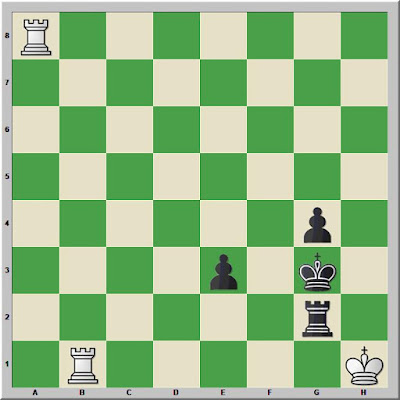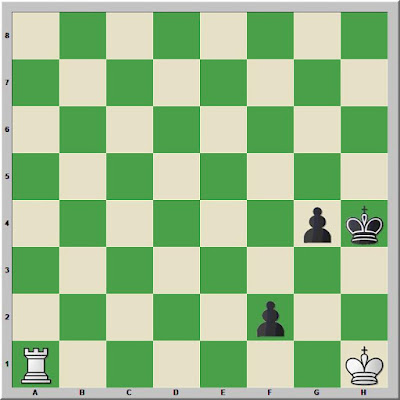What if? Central to every game of chess even played are the moves that were rejected. Immature chess players care only for the moves that were played, rather than what might have been played.
Several years ago, I was going through a game with a friend who had just finished playing it. As we were examining what might have taken place, his opponent came by and redirected our attention to the game as played. My friend and I were laboring to improve our understanding of the game--the tactics and positional ideas--as preparation for the future. We were seeking missed opportunities where he might have gained an advantage or refuted an attack. I cannot recall the specifics. His opponent seemed to care only for the result of the game just played (he probably won). I have long remembered this event because I believe the attitude of my friend's opponent is the core reason that particular player will never rise above a certain level in his chess skill.
Regularly I see the same attitude among young children. For the past several years, several of the strongest players in our community have staffed an analysis table at youth tournaments. Youth players who bring their game score to the analysis table get a raffle ticket and a free lesson, often from a chess master (FM Jim Maki has been the most consistent analyst since moving to the area). Every child who collects five raffle tickets in a five round tournament earns a pawn key chain, and then there are the prizes that are raffled off--rook, knight, etc. key chains, books, chess sets. In pursuit of the raffle tickets, children sometimes show impatience with the lessons.
I usually run the pairings at these tournaments, but sometimes also spend time at the analysis table. Several times after the next round begins, I've spent time playing through variations on a child's game with one of the other coaches. These are the best moments of the tournament.
Last night, this quest for the truth of a position brought me back to a game that I posted in November (see "
Crushing Attack"). I had also posted the game in a forum at
Chess.com, where I had highlighted Nana Dzagnidze's brilliant
17...Rxd5 from this position.
Black to move
The game continued 18.Bxd4 Rxg5 and Antoaneta Stefanova resigned. However, she might have played 18.cxd5.
A poster questioned whether 17...Rxd5 was such a brilliant move. What if White had responded differently? First, Black's second best move from the diagram is 17...Nxh3 and then 18.Bxh3 Qd3 leaves Black with some pressure against the king as compensation for the piece.
When I first looked at this game with a group of children in an after school chess club, I liked White's 17.Nd5 because it appeared to solve White's problems and at the same time render Black's attack somewhat critical. Discovering how giving up the queen leads to a unstoppable attack, however, showed me that White's position after 17.Nd5 was not so good.
But, White is not forced to capture the queen.
After the alternative,
18.cxd5, it seems that Black must play
18...Qxd5.
White to move
I spent more than an hour playing against Stockfish from this position this morning. Continuing Black's attack proved challenging.
Stockfish played
19.Qg4, which appears to be White's best option.
19...Nxg2 20.Kxg220.Qxg2 Rh5 leads to a version of what transpired against Stockfish that is even better for Black.
I did not easily find the best move here, so took the advice of the engine.
20...Bd7 21.Bxg7 Rh5
White to move
22.f4
22.h4 Bxg5
22...exf3+ 23.Qxf3
Black to move
I tried a lot of different moves here. In every case, I eventually faltered and reached a position that was either equal or clearly worse for Black. I found that I needed to maintain some pressure against White's king and grab some pawns as long as it could be done without loss of time.
It is clear that Black has a nice position. Nonetheless, with the sort of skill Stockfish brings to the position, White's pieces become coordinated and counter-pressure against Black's king makes it difficult to find a clear win.
23...Qxd2
This move kept me in the game longest.
24.Kh1
Running in the database program, instead of the playing program, Stockfish prefers 24.Rf2 Qxg5+ 25.Kh1 when Black at least has two pawns for the sacrifice of the exchange.
24...Qd7 25.Rfd1 Qc8 26.Rd3
Black to move
I played on for awhile, and may try from this position again. Although Black might be objectively better, White's position seems a little easier to play.



























































